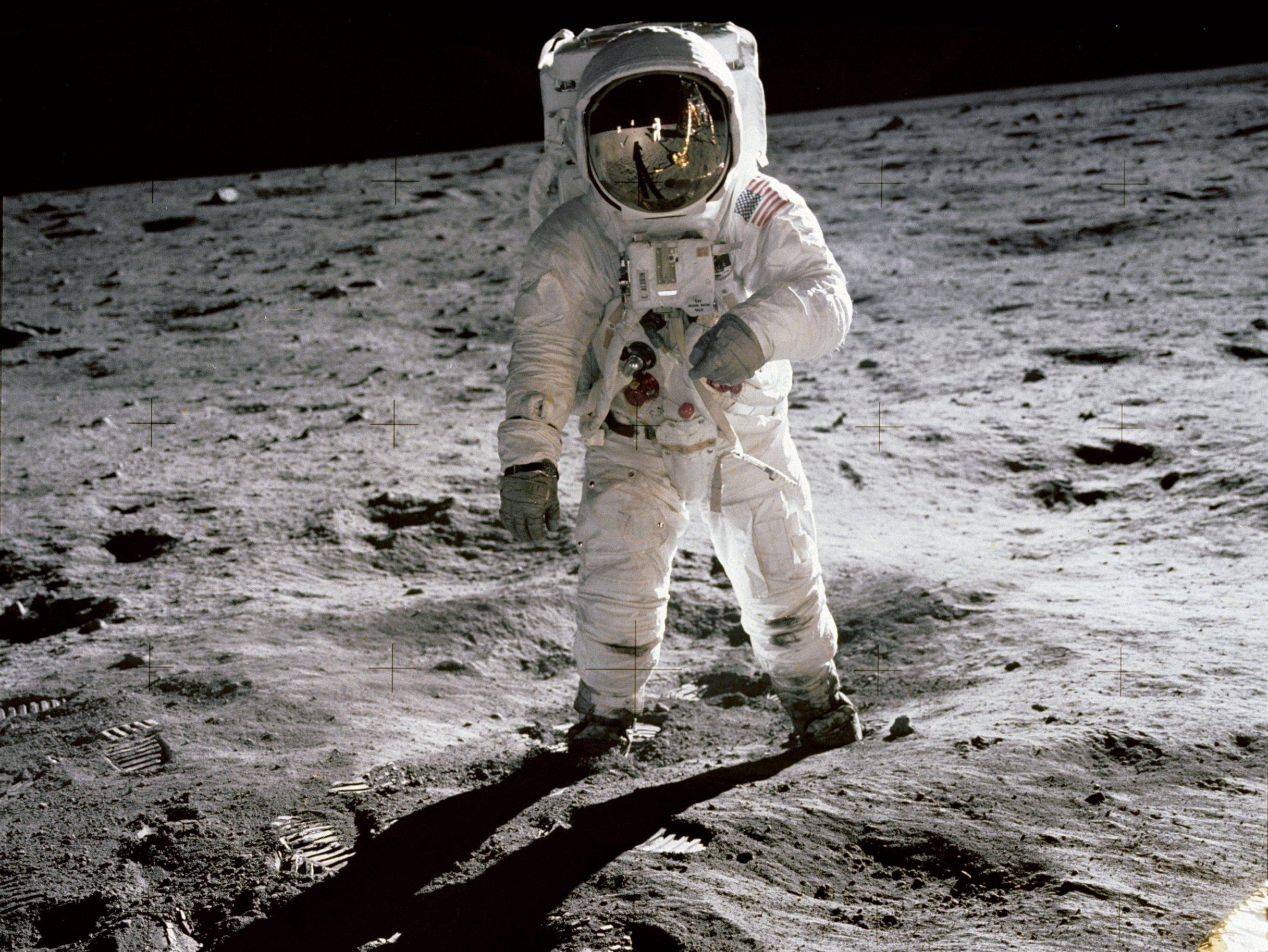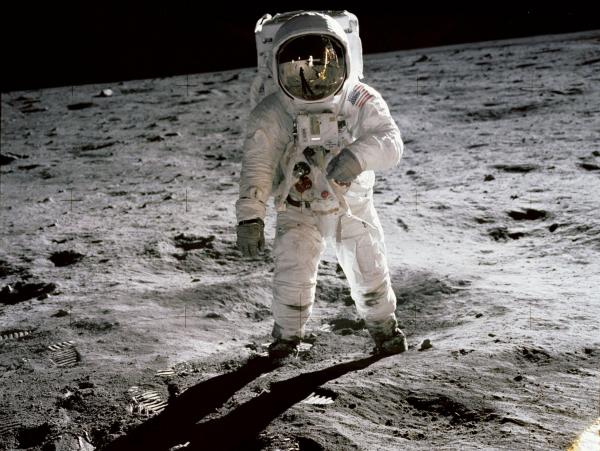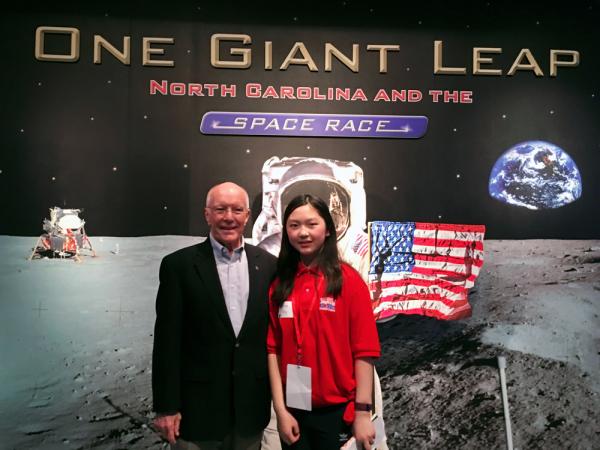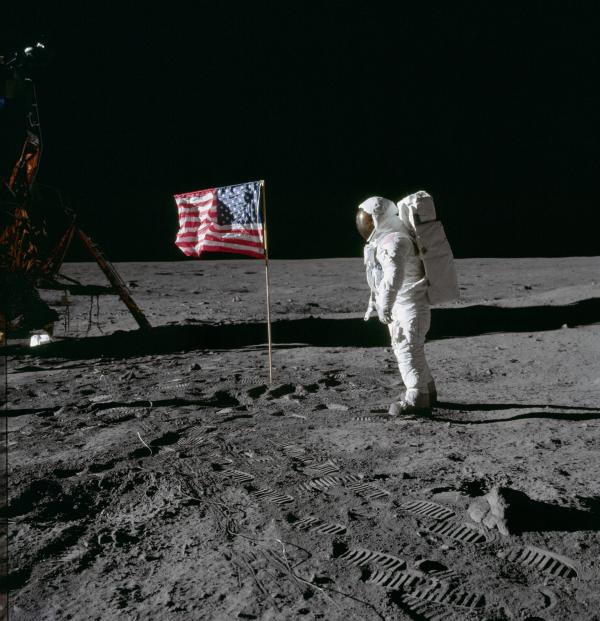KID REPORTERS’ NOTEBOOK
Shooting for the Moon—Again


NASA astronaut Buzz Aldrin on the Moon in 1969. The photo was taken by Apollo 11 Commander Neil Armstrong, whose reflection can be seen in Aldrin’s visor.
“That’s one small step for man, one giant leap for mankind,” said Apollo 11 Commander Neil Armstrong on July 20, 1969. Armstrong uttered those words from the Moon. He was one of three astronauts aboard NASA’s Apollo 11 mission and the first person ever to walk on the Moon.
Starting in 1961 and ending in 1975, NASA’s Apollo Program contributed profoundly to our understanding of the universe. During that time, six flights made it to the Moon. Now, 50 years after the historic 1969 landing, NASA has announced a new plan to go back.
The North Carolina Museum of History in Raleigh chronicles the Apollo Program and my state’s role in it in a special exhibit called “One Giant Leap: North Carolina and the Space Race.” Gerry Griffin, an Apollo flight director and and former director of the Lyndon B. Johnson Space Center, recently spoke at the museum, whose exhibit coincides with the 50th anniversary of the first moon landing. I had a chance to talk with Griffin before he went onstage.

Teresa with Gerry Griffin, a former NASA official who served as a flight director during the Apollo program
WINNING THE SPACE RACE
Being a flight director, Griffin said, was a bit like “conducting an orchestra.” The directors had to know what everyone involved in the missions was doing and make sure that everything was in order. Griffin explained that flight directors “put all of the information from the command module, the lunar module, the doctor, and the trajectory guys together to conduct the symphony.”
NASA’s mission to get to the Moon grew out of a speech that President John F. Kennedy delivered in 1962. “We choose to go to the Moon in this decade,” Kennedy said, “because that goal will serve to organize and measure the best of our energies and skills.” At the time, the United States was behind the Soviet Union in the “space race,” a competition behind the two global powers.
“The Apollo programs showed what the country could do if everybody signed up to reach a goal,” Griffin said. “The fact that we did it, and we did it successfully, says that we can do this. We’re [designed] to go deeper into space.”
Griffin observed that the Apollo missions added to our understanding of the world beyond Earth. On Apollo 17, a geologist accompanied the astronauts, affording “the best science return.”

Aldrin (above) and Armstrong planted an American flag on the Moon during their historic visit in 1969.
MARS, TOO?
NASA officials recently announced an accelerated plan for astronauts to travel to the Moon by 2024. The mission would require the approval of the U.S. Congress.
“If we had the political environment we had in the 60s, I think it’s possible,” Griffin said. “It’s going to take a national commitment to get to the Moon by 2024.”
Still, Griffin believes that such a trip, the first since 1972, would be worth it. Scientists have said that the Moon has enough resources to sustain human life, if necessary. The abundance of the Moon’s helium-3, a powerful fusion fuel, may provide a future source of energy on Earth.
NASA also wants to send astronauts to Mars for the first time. What would it take to reach the Red Planet safely?
“We’re going to have to learn more about what Mars is like," Griffin said. Designing aircraft and space gear that can withstand the planet’s dangerous atmosphere will be the biggest hurdle.
Griffin thinks that humans will continue to explore the universe despite the dangers and the cost. “One day, we may use our planet up," he said, “and for the species to continue, we may have to go somewhere else and start again.”
